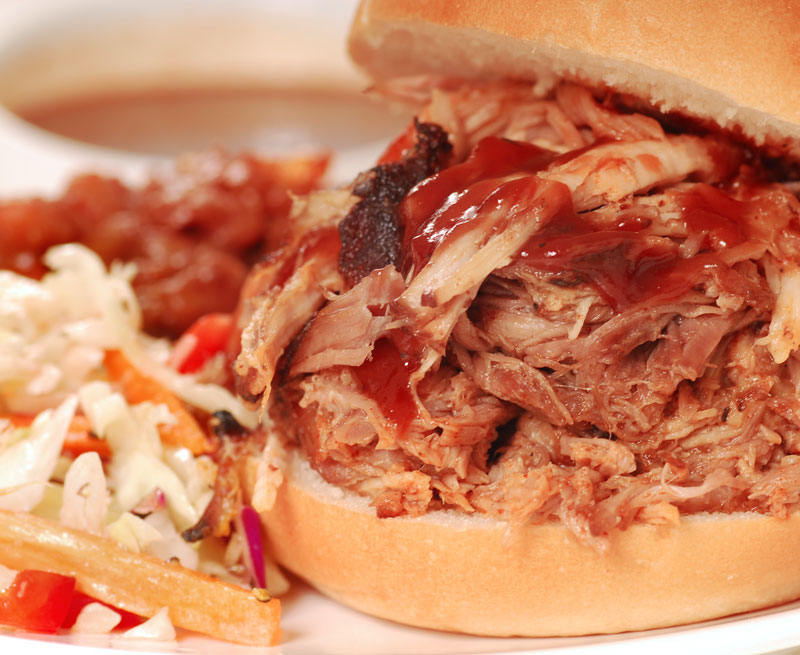Q: Could you give me some insight on the outlook of the barbecue industry? Is the industry stable? Is this a good time to invest in barbecue?
A: Chris, since I grew up eating Kansas City–style barbecue as a treat, your concept is near and dear to my heart (and stomach!). If you don’t mind, let me first pull the lens back a little and talk about trends in general, and then I’ll answer your specific question about barbecue.
Understanding how to tap into trends is so important in our industry because quick-service concepts need to generate enough demand to produce a healthy ROI on high real estate and labor costs. The key is to have mainstream appeal while offering something unique. So your concept should tap into an idea that is gaining in popularity, but shouldn’t be so common that everyone’s “been there, done that.”
To use a trend in your favor, you don’t want to simply jump on the bandwagon. How many fro-yo places were opened after Pinkberry and Red Mango hit it big, only to be shuttered in a few months due to customer fatigue from a saturated market?
Establishing and sustaining relevance to consumers requires a much more rigorous approach. You need to understand what’s going on in society and anticipate and interpret the cultural movements that will affect your customers and the industry.
To identify powerful ideas on the horizon, there are a few strategies at your disposal.
Scanning. Continuously monitor different media, cultural developments, and the activities of brands in and outside of your category. Look for new consumer attitudes and behaviors and how different groups and organizations engage with them.
Listening. Use social networks to identify food influences. Keep in mind it’s not as important to know what’s trending on Twitter, for example, as it is to understand who and what are prompting the discussion. Topics come and go, sometimes in a day. Values and communities that influence topics tend to have a longer shelf life.
Using trend-forecasting services. Search the databases of firms like Cassandra Daily and PSFK. Look for common themes across new developments and keep an eye out for innovations in seemingly unrelated fields that might influence your customers.
You want to decipher where people are going in the long term and analyze how your brand can add value in ways that are consistent with that direction. Starbucks, for example, was created because CEO Howard Schultz saw an opportunity in the phenomenon of the increasing isolation in American society. By creating a “third place,” Starbucks thrives on the coffeehouse culture he imported from Italy and the casual social interaction it fosters.
Identifying the right trajectory is critical. Chipotle could have followed the Mexican food trend and positioned its brand based on the growing interest in ethnic foods. Instead, it understood how much bigger and more powerful the “good” food movement was, and now it is not only appealing to consumers’ existing sensibilities about sustainable ingredients, but also advancing people’s understanding of its many benefits.
Now, on to your question about barbecue. It certainly seems to be a popular trend. Just this past summer, we saw Burger King introduce a Summer BBQ Menu and White Castle revived several barbecue products. As I’m writing this, news about Carl’s Jr./Hardee’s Memphis BBQ Burgers has just hit. Outside of the quick-service industry, there are cues about the cultural strength of barbecue from the popularity of the “Bobby's BBQ Addiction” show on the Food Network and the recent Bon Appetit cover story on barbecued ribs.
The challenge is how to take such a relevant theme and differentiate your concept. You’ll need to identify a brand platform of unique values, attributes, and benefits that make your barbecue familiar but different. And remember, things like great taste and friendly service are table stakes, not differentiators.
Also, in order to ensure your concept has staying power, it’s important to align your brand of barbecue with some of the predominant movements in U.S. food culture today:
Health and wellness. Generally speaking, barbecue is not perceived to be healthy, given that it usually involves red meat, thick sauces, and indulgent side dishes. But food prepared on a grill does enjoy a healthy halo. Through your recipes and messaging, you might want to emphasize the grilling of your products. Doing so will broaden your concept appeal and bolster visit frequency.
Sustainable and natural. The increased collective consciousness about “good” food means that some people are going to scrutinize your ingredients and inquire about your food sources. Depending on your geography and target customers, it may not make sense for you to cater to that segment now. But you should keep your finger on the pulse of your customers to determine if, when, and how to address this growing demand.
Affordable luxuries. In our economy, people are looking to treat themselves with small indulgences. This is, in part, why snacks, sides, and drinks are growing menu categories right now. But barbecue is typically served up in full meals. So consider how you might price, portion, and promote your products so as to speak to the value sensibilities of today’s customer.











